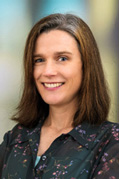Hepatocellular Lesions: Molecular Classification and Diagnostic Pearls
Using a case-based approach, this talk focuses on the molecular and immunohistochemical features that can be helpful in diagnosing and understanding well-differentiated hepatocellular lesions: focal nodular hyperplasia, hepatocellular adenoma, and hepatocellular carcinoma.
Originally published on July 6, 2023
Lecture Presenter
 | Kimberley J. Evason, MD, PhD Assistant Professor of Pathology |
Dr. Evason is an assistant professor at the University of Utah School of Medicine and an investigator in the Department of Oncological Sciences at the Huntsman Cancer Institute. She received her MD and PhD through the Medical Scientist Training Program at Washington University in St. Louis. She served a residency and completed fellowship training in anatomic and liver/gastrointestinal pathology at the University of California at San Francisco, followed by a postdoctoral fellowship mentored by Didier Stainier, Andrei Goga, and J. Michael Bishop. Dr. Evason’s research and clinical interests are centered on gastrointestinal and liver pathology, with a specific focus on hepatocellular carcinoma. She is currently investigating molecular pathways and identifying drugs that influence liver tumorigenesis.
Objectives
After this presentation, participants will be able to:
- List the four main subtypes of hepatocellular adenoma (HCA) and their distinguishing molecular features
- Understand the inter- and intratumoral heterogeneity of hepatocellular carcinoma (HCC) and know the most common genetic mutations in HCC
- Define how special stains and immunohistochemistry can help differentiate among HCC, focal nodular hyperplasia, and different HCA subtypes
- List the molecular and clinical features that are associated with malignant transformation in HCA
Sponsored by:
University of Utah School of Medicine, Department of Pathology, and ARUP Laboratories
 Site Search
Site Search






